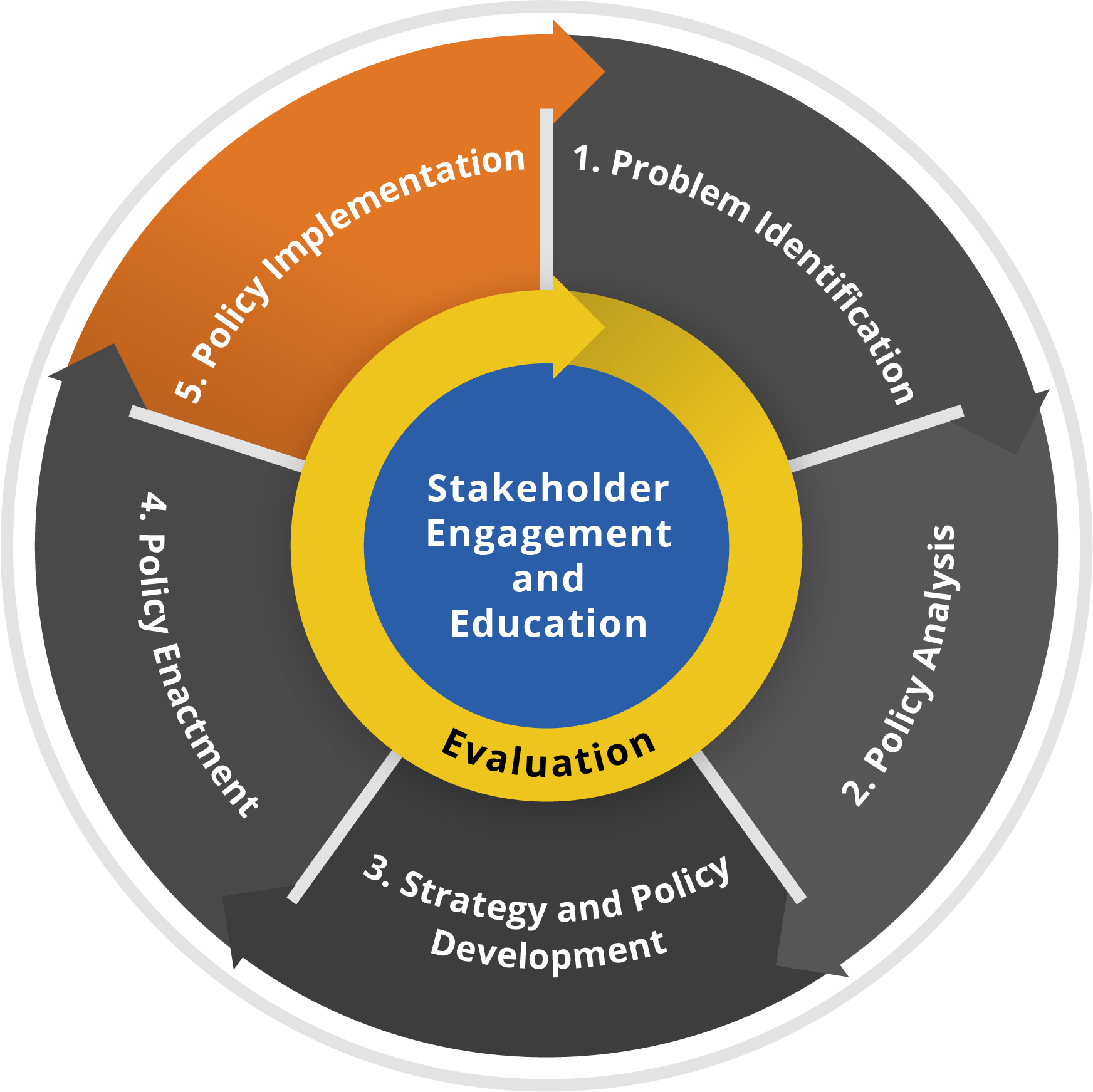Public Policy Formulation-2: Models
This is an abridged version of one of the chapters of the 2nd edition of my ebook, “Public Policy Formulation and Analysis: A Handbook," published by Amazon and available at
Policy Formulation Process: Dye’s Five-Stage Model
- The process of policy formulation involves problem identification, policy formulation, policy adoption, policy implementation, and policy evaluation.
- Problem identification involves identifying and describing the problem, its history, and the reasons why existing policies cannot solve it.
- Policy formulation includes discussions and debates between government officials, interest groups, and citizens to set clear goals and list the steps to achieve them.
- Policy adoption focuses on making a better choice among the policy alternatives, considering economic and social benefits.
- Policy implementation involves assigning responsibilities to agencies, ensuring communication and coordination, and compliance with the new approach.
- Policy evaluation assesses the effectiveness of the policy after implementation and identifies deficiencies.

Policy Formulation Process: Almond-Powell Six-Stage Model
- Interest Articulation: Interest articulation refers to the need to formulate new policies or amend existing ones due to structural changes, pressure from interest groups, regime change, donor requirements, global commitments, and court orders.
- Interest Aggregation: Interest aggregation involves political parties aggregating conflicting demands into viable policy options reflected in election manifestos.
- Rule-making and policy formulation: Rule-making is the crucial stage of policy formulation, involving the integration of policy concerns into sectoral policies or the preparation of sector-specific policy documents. The validation process includes establishing task forces, conducting workshops, producing a first draft of the policy document, and incorporating feedback.
- Rule Implementation: Rule implementation involves defining agencies and organizations, assigning responsibilities, and ensuring compliance with the new policy.
- Rule Adjudication: Rule adjudication refers to the process of applying and interpreting policies by courts or other relevant bodies. If a policy violates the Constitution or results in gross injustice, the judiciary can take action to amend or strike down the policy.
- Monitoring, Evaluation,, & Feedback: Monitoring, evaluation, and feedback assess the policy’s working, its impact on society, and the achievement of targeted objectives.
Comparison with Dye’s Model:
- Almond and Powell’s six-stage model expands on Dye’s five-stage model by including interest articulation, interest aggregation, rulemaking, rule adjudication, monitoring, evaluation, and feedback stages.
- Dye’s model focuses on problem identification, policy formulation, policy adoption, policy implementation, and policy evaluation.
Iron Triangle of Public Policy:
- The iron triangle consists of political elites, bureaucracy, and the private sector.
- These groups work together to protect their respective vested interests.
- Each component of the iron triangle ensures their core interests are not affected by public policies.
Challenges in Public Policy Formulation:
- Information gaps, management deficiencies, institutional handicaps, resource deficiencies, stakeholders’ acceptance, and capacity deficits of bureaucracy are common challenges in policy formulation.
- The availability of accurate and relevant information, skilled actors, proper institutions, and adequate resources are essential for successful policy formulation.
Facilitating Public Participation:
- The public can participate in policy formulation through various channels, such as media, civil society organizations, public representatives, and government servants.
- Techniques like writing letters, giving interviews, holding conventions, and holding street demonstrations can be employed to press demands.
- Requirements for meaningful public participation include high literacy rates, faithful implementation of fundamental rights, free media, and an independent judiciary.
Public Participation:
- Individuals have the right to petition if they feel there are restrictions on public participation in governmental affairs.
- Public participation is crucial for holding governments
Request
Thank you very much for reading the article
If you liked it, kindly express your appreciation by clicking the clap icon below as many times as you like
Why not share it with your friends on social media? Knowledge is a common heritage of us all
And, kindly, do follow me as well as subscribe to my newsletter
You may like to read also
- Public Policy Formulation-1: Definition, Types, & Components
2. Public Policy Formulation-3: Features of a Good Public Policy
3. Public Policy Formulation-4: Case Study-Policy Formulation in Pakistan
